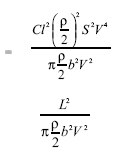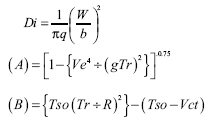Published online by Cambridge University Press: 27 January 2016
Today, all sailplanes in any particular class look and perform more or less the same. This gives credence to the view that the necessary compromises in design and sailplane technology have reached a limit. Sailplane development is on a sort of plateau. Further, apart from perhaps boundary-layer control (BLC), there appears to be nothing in the foreseeable future that promises any significant improvement in performance. It is the purpose of this paper to, once again, encourage interest in Variable Geometry (VG) and address the controversies which prevailed in abundance during the 1970s and which apparently still survive today.

 and in level flight L is substantially equal to the W.
Therefore:
and in level flight L is substantially equal to the W.
Therefore:  Sequence of evaluation for relating the straight glide performance (Vd/Ve) curve of a sailplane to the achievable Vct in a particular thermal.
Google Scholar
Sequence of evaluation for relating the straight glide performance (Vd/Ve) curve of a sailplane to the achievable Vct in a particular thermal.
Google Scholar